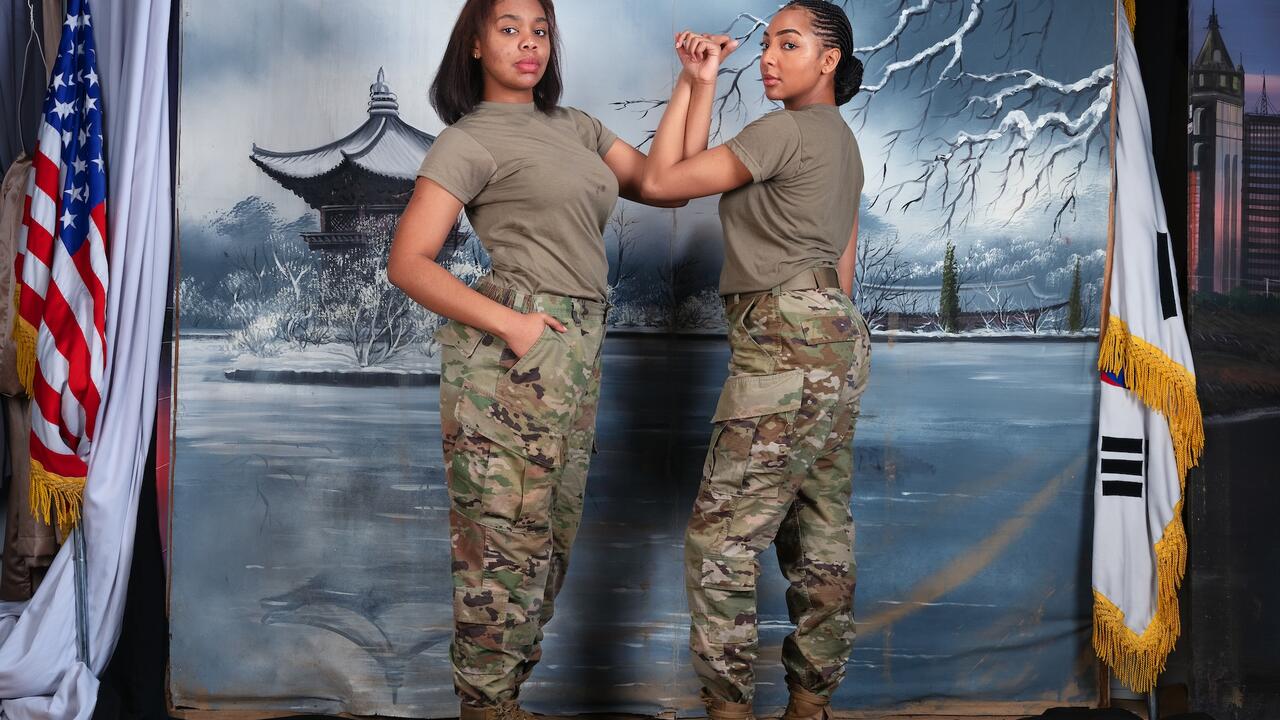Thessaloniki Biennale 2
Various venues, Thessaloniki, Greece
Various venues, Thessaloniki, Greece

In the Greek Minister of Culture’s introductory essay to the catalogue of the Thessaloniki Biennale 2, he described the exhibition’s title, ‘Praxis: Art in Times of Uncertainty’, accurately, though probably inadvertently, as ‘generic’. The exhibition shows works by more than 150 artists from 40 countries in three main spaces around the city’s port, while additional venues – book shops, hamams, public squares and museums – host an erratic parallel programme of events, actions and smaller contextualizing exhibits. The Biennale’s title is pointed: this is about doers rather than thinkers, about recalibrating stuffy old theory with a fruitful relationship to praxis. The aim? Nothing less than a radical alteration of individual and social relations. Heady ambitions indeed, so little surprise that it falls considerably short.
Curated by Gabriela Salgado, Bisi Silva and Syrago Tsiara, ‘Praxis’ emphasizes engagement with the local trading port community while keeping an eye on the city’s position in a country stirred by riots last year. Inspiration comes from the unlikely source of Terry Eagleton, Britain’s favourite Marxist intellectual, and his 2004 book After Theory, which considers both the claimed deflation of continental philosophy and its insufficient engagement with lived experience. This choice felt like a riposte to Catherine David’s inaugural edition of the Biennale, which eschewed the usual accessibility of small-city biennials by staging a dialogue with a 1967 lecture by Michel Foucault. In a historically loaded city with a so-called peripheral position, it’s decidedly odd that two western European intellectuals should hold such sway.
Thessaloniki became part of the Greek nation-state after the fall of Ottoman rule in 1912; eleven years later Muslim and Christian populations were expatriated between Turkey and Greece. With this in mind, Salgado asks, ‘What models for consensual living together can artists propose to society at large?’ Collective, collaborative and documentary approaches are well represented, though the work is distractingly inconsistent in quality and grindingly similar in preoccupation. Much is illustrative (photographs of sea defences and container ships abound in the portside venues) or contented with well-mined solutions (reconfigured monuments and recycled goods are both much in evidence).

The Biennale claims to be responsive to a number of complex events – the collapse of colonialism, the Soviet bloc, and, a recent favourite, the presumed failure of Modernism – though its biggest failing is an inability to posit these discussions as anything other than black and white oppositions. This is literally the case with Samba Fall’s Alphabet (2008), shown in the largest of the portside venues, which contrasts two views of Africa via two maps of the continent. Straightforward binaries are seen throughout this flatly curated redbrick space: Sheela Gowda’s Inkjet prints places a woman throwing a stone at troops next to a close-up of a butterfly (Crime Fiction [Diptych], 2008), and Mircea Cantor’s Airplanes and Angels (2008) is a hung carpet on which motifs of white cherubs and black bombers alternate. This is didactic work from artists capable of better things. Art as a politically conscious salve for crises of all stripes leads large sections of this venue into a frustrating cul-de-sac of political mannerism, wherein symbols of conflict – targets, guns and barbed wired – stand for meaningful engagement.
Close to the city centre, the 15th-century Paradise Hamam contains the most consistent selection of work. Melanie Manchot’s The Dream Collector (Mexico City) (2008), comprising several videos in which the artist asked people found sleeping in public spaces – on waking – to recount their dreams to the camera, and Kimsooja’s four-channel video Mumbai: A Laundry Field (2007–8) offer less heavy-handed approaches to social engagement. Suggesting a playfully speculative though still politicized look at 20th-century Greek history, Mary Zygouri’s The Fattening Cells (2007) continues her invented biography of Dimitrios Zalouchos, presenting a life-size model of the fictional civil engineer’s key invention: a wooden panopticon for chicken farmers to observe their livestock.
Tucked away in the old National Bank is one of the strongest works: Clemens von Wedemeyer and Maya Schweizer’s Metropolis, Report from China (2007). Documenting the artists’ 2004 research trip to Beijing while planning a remake of Fritz Lang’s 1927 film Metropolis, the work already feels like a historical piece; the migrant workers they interviewed having now drifted back to their rural hometowns as the city’s mammoth building project begins to slow. More direct in its consideration of migration and displacement was Jens Haaning’s intervention Albanian Pigeons (2009) – one of relatively few commissioned works – in which the Danish artist released 100 pigeons from Tirana in Thessaloniki’s city centre.
Challenging certainties is doubtless productive, but in Thessaloniki the state of uncertainty more often spills over into aimless paranoia or paralyzing indecision. Right now a strong argument needs to be made for why Greece needs two biennials (Thessaloniki’s runs concurrently with the Athens Biennale, which was also inaugurated in 2007), something that ‘Praxis’ fails to provide.






















